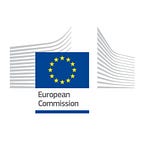5 points to take away from the reflection paper on social dimension of Europe
On 26 April 2017 the European Commission published the reflection paper on the social dimension of Europe — how we plan to keep high standards of living, create more and better jobs, get people the training they need and bring communities together.
Here are five main things you should know about it.
1. What is Europe’s social dimension?
This reflection paper depicts a social Europe that nurtures democratic, cohesive, inclusive, culturally diverse and prosperous societies. In reality, this means economic and social progress, fighting against discrimination and social exclusion, making Europeans fit for the labour market and allowing them to live fulfilling lives.
2. What do Europe’s social realities look like today?
Europe is home to multiple legacies shaping present realities. Education and health, employment patterns, wages, incomes and social protection systems still differ greatly across our 27 countries. The reflection paper provides data portraying variety of their current situations, as well as tools proved to be efficient in coping with crises. From unemployment benefits to minimum income schemes and public services focused on reskilling and reintegration in the labour market — we can all learn from each other’s experience.
3. What future trends can we expect to see realised by 2050?
Some of the upcoming challenges and opportunities that Europeans will face are:
- Longer and healthier lives — life expectancy will increase from an average of 43 years in 1900 to an expected 82 in 2050 for men and from 46 to 87 years for women.
- Aging population — by 2030 Europeans will be the oldest people in the world.
- Slow improvement in gender gap — despite improvements, there is a long way to go before achieving equal representation of both genders in the labour market as well as economic and political decision-making positions.
- Growing urbanisation — more and more Europeans will move to cities, bringing up the number of those living in urban areas from the current 70% to 80% by 2050.
- Better connectedness and efficiency of European cities — which will rely on and promote the usage of renewable energy resources.
- Changes in lifestyle — a shift is expected towards individual values, freedom and independent lives, as well as growing presence of social isolation and less stability in people’s lives. We’ll see the rise of new forms of solidarity, social engagement and civic participation. Reinvention of cultural identities is expected to happen as a product of increased exposure to diversity.
- Transformation of working life — in the coming years we will witness growing use of flexible working and tele-work options, frequent change of jobs, focus on output and outcomes rather than physical presence in a specific location. There will be higher demand for cross–disciplinary know-how and creative skills, as well as people following dynamic careers with periodic retraining and lifelong learning.
- Modernisation of education — which will occur as an imminent consequence of digitalisation, new technologies and emerging workforce requirements.
4. What is the way forward for EU27?
In the white paper a plan was presented by the European Commission on the 1st of March, there are three main options for the social future of Europe:
- Limiting the “social dimension” to free movement
- Alternatively, those who want to do more could do more in the social field
- Or, the EU27 could deepen the social dimension together
The reflection paper looks at the practical implications for each of these options, as well as their positive and negative aspects.
5. Moving the debate forward
Every European country is ultimately striving for the same thing: to create a fairer society based on equal opportunity. Our gender, birthplace, family background or wealth on the day we are born should not determine the level of access to education, services or opportunities.
The reflection paper sets the debate towards two open questions:
- What challenges should our countries tackle together?
- What added value can EU level instruments provide in this struggle?
The Commission hopes that this reflection paper will prepare the way for a full and open discussion about where our societies want to go and how the EU can help them get there. Read the full reflection paper here.
